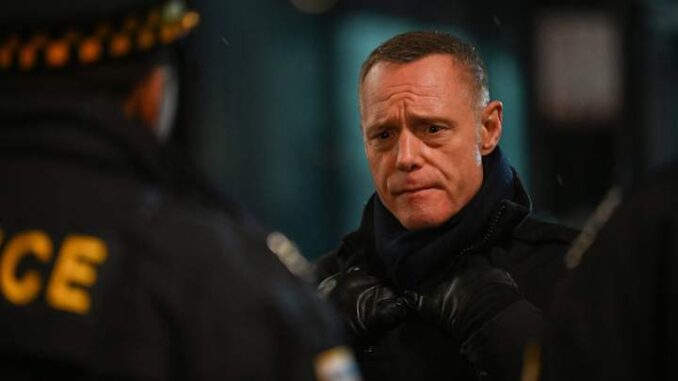
Chicago P.D.: Behind the Scenes Intense Filming Moments You Missed
The wail of a siren. The screech of tires. The rapid-fire crackle of gunfire and the guttural roar of a desperate chase. On screen, Chicago P.D. delivers a visceral, adrenaline-fueled punch, an hour-long plunge into the gritty, unforgiving world of District 21’s Intelligence Unit. But what glides seamlessly across your screen, a symphony of chaos and justice, is merely the polished tip of an immense, often grueling, iceberg. Behind the illusion lies a world of intense filming moments you, the viewer, never see – moments of precision, perseverance, and palpable pressure that forge the very essence of the show's famed realism.
Step onto the set, and the first thing that strikes you isn't the glamour, but the raw, unyielding energy that permeates the air. Take, for instance, a seemingly spontaneous foot pursuit through labyrinthine alleyways or across active train tracks. What appears as a frantic dash is, in reality, a meticulously choreographed ballet of danger. Actors, often performing their own stunts, push their bodies to the limit, mile after mile, take after take. Imagine the biting Chicago wind whipping through a narrow gangway in January, or the shimmering, suffocating heat radiating off asphalt in July, as Jesse Lee Soffer or Patrick John Flueger sprint full-out, repeatedly, until the camera captures that perfect, lung-burning shot. You see the strained expression; you don't see the paramedics standing by, or the copious amounts of water consumed between takes, or the quiet agony of aching muscles the next morning. These aren't just actors running; they are athletes, pushing physical boundaries to sell the desperate urgency of a pursuit.
Beyond the explosive physicality, there's a different kind of intensity in the show's quieter, yet equally powerful, emotional beats. Consider a tense interrogation scene or a deeply personal confrontation. The silence on set before the director calls "action" is often deafening, charged with a palpable current of anticipation. Actors like Jason Beghe, known for his raw, gravelly portrayal of Voight, don't just "act" angry; they tap into a wellspring of controlled fury, a simmering rage that ripples through the very air around them. The nuanced twitch of a facial muscle, the slight tremor in a voice, the piercing intensity of a gaze – these are not accidental. They are the result of countless rehearsals, deep dives into character psychology, and the courage to remain utterly vulnerable in front of a sprawling crew. You see the tears or the controlled wrath; you don't see the painstaking preparation, the exhaustion of maintaining that emotional peak through multiple camera angles, or the vulnerability of the actor allowing themselves to be consumed by their character's pain, take after agonizing take.
And then there are the logistics, the unseen leviathan that underpins every "Chicago P.D." scene. Filming in a bustling metropolis like Chicago presents a unique set of challenges that magnify the intensity. Picture a massive car chase involving multiple vehicles, controlled explosions, and precise stunt maneuvers on a major city street. This isn't just about actors driving fast. It’s a symphonic feat of coordination involving city permits, traffic control, police departments (both real and fictional), pyrotechnic experts, and a small army of crew members. Hours are spent blocking off entire neighborhoods, establishing secure perimeters, and running intricate safety checks. The cacophony of walkie-talkie chatter, the hum of generators, the flashing of emergency lights, and the constant, rapid adjustments to ever-changing variables create an atmosphere of controlled chaos. You see the exhilarating chase sequence; you don't see the myriad of contingencies planned for, the long hours spent waiting for the perfect window of opportunity, or the collective sigh of relief from hundreds of people once a dangerous shot is safely in the can.
These are the moments you miss: the sharp intake of breath from a camera operator as a stunt goes perfectly awry in a controlled environment; the silent nod of approval between a director and an actor after a particularly gut-wrenching take; the dry, witty remark exchanged between crew members to break the tension after an emotionally draining scene; the countless hours of tireless repetition, adjusting a single prop, tweaking a line, or refining a camera movement until it achieves cinematic perfection. It's the frostbite on a grip's fingers in winter, the sweat stinging a gaffer's eyes in summer, the unsung heroism of a safety coordinator ensuring no one gets hurt, or the quiet camaraderie that blossoms among a crew united by an incredibly demanding schedule.
What you see on screen is merely the tip of the iceberg, a polished, thrilling narrative. What you miss are the unseen battles fought daily on set: against the elements, against the clock, against fatigue, and against the immense pressure to deliver a product that consistently thrills and resonates. These behind-the-scenes intense moments, the unseen labor and dedication, are not just footnotes; they are the very bedrock upon which the raw, authentic intensity of Chicago P.D. is built, a testament to the unseen artistry and unwavering commitment of everyone involved.
